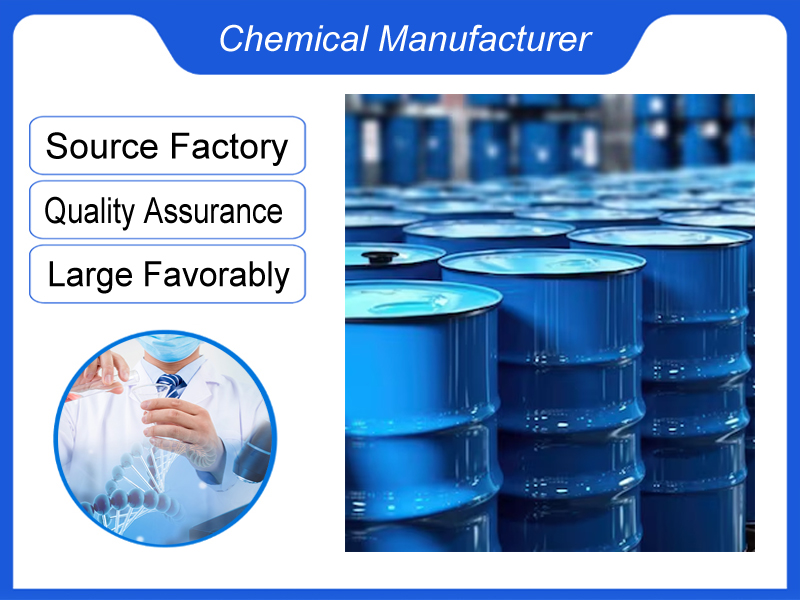
Dimethyl Disulfide
Dimethyl Disulfide (DMDS)
CAS No.: 624-92-0 | EC No.: 210-871-0
1. Chemical Identification
Property
Specification
IUPAC Name
(Methyldisulfanyl)methane
Molecular Formu...
Category:Paint chemicals
Introduction
Dimethyl Disulfide (DMDS)
CAS No.: 624-92-0 | EC No.: 210-871-0
1. Chemical Identification
| Property | Specification |
|---|---|
| IUPAC Name | (Methyldisulfanyl)methane |
| Molecular Formula | C₂H₆S₂ |
| Molecular Weight | 94.20 g/mol |
| Appearance | Clear yellow liquid |
| Density | 1.062 g/mL at 25°C |
| Melting Point | -85°C |
| Boiling Point | 109-110°C |
| Refractive Index | n<sup>20</sup><sub>D</sub> 1.525 |
| Flash Point | 15°C (closed cup) |
| Explosive Limits | 1.1-16.1% (in air) |
Synonyms:
DMDS, Methyl disulfide, Dimethyldisulphide
2. Key Applications
Industrial Solvent
- Pesticide Manufacturing: Key intermediate for soil fumigants
- Petrochemical Processing:
✓ Coking inhibitor for ethylene crackers
✓ Lubricant additive for extreme pressure performance
Chemical Synthesis
- Primary Precursor for:
✓ Methylsulfonyl chloride production
✓ Methanesulfonic acid derivatives
Specialty Uses
- Food Industry: Flavoring agent (at regulated levels)
- Fuel Additive: Sulfur-containing compound for diesel
3. Product Advantages
✔ High Reactivity – Effective sulfur donor
✔ Multi-functional – Cross-industry applications
✔ Process Efficiency – Reduces coking in refineries
4. Physical & Chemical Properties
- Vapor Pressure: 28 mmHg at 25°C
- Solubility:
- Miscible with organic solvents
- Slightly soluble in water (2.5 g/L)
- Autoignition Temp.: 300°C
5. Handling & Storage
| Parameter | Requirement |
|---|---|
| Storage Temp | <25°C (explosion-proof area) |
| Packaging | 180kg steel drums/N₂ blanket |
| Shelf Life | 24 months stabilized |
| Special Notes | Ground all containers |
6. Safety Information
Danger!
- H225: Highly flammable liquid/vapor
- H315+H319: Causes skin/eye irritation
- H335: May cause respiratory irritation
Protective Measures:
- P210: Keep away from heat/sparks/open flames
- P403+P235: Store in well-ventilated place
- P303+P361+P353: Skin contact wash procedure
7. Quality Specifications
- Purity: ≥98% (GC)
- Sulfur Content: 68-70%
- Water Content: ≤0.1%
Names and Identifiers
| Name | Methyl disulfide |
| Synonyms | mds DMDS YWHAZ MGC138156 MGC126532 Sulfa-hitech Methyl disulfide Dimethyldisulfide Methyl disulphide Sulfa-hitech 0382 Dimethyl disulfide disulfuredemethyle Dimethyl disulphide methyldithiomethane (methyldisulfanyl)methane |
| CAS | 624-92-0 |
| EINECS | 210-871-0 |
| InChI | InChI=1/C2H6S2/c1-3-4-2/h1-2H3 |
| InChIKey | WQOXQRCZOLPYPM-UHFFFAOYSA-N |
624-92-0 – Physico-chemical Properties
| Molecular Formula | C2H6S2 |
| Molar Mass | 94.2 |
| Density | 1.0625 |
| Melting Point | -85 °C |
| Boling Point | 109°C(lit.) |
| Flash Point | 76°F |
| JECFA Number | 564 |
| Water Solubility | <0.1 g/100 mL at 20 ºC |
| Solubility | 2.7g/l |
| Vapor Presure | 22 mm Hg ( 20 °C) |
| Vapor Density | 3.24 (vs air) |
| Appearance | Liquid |
| Specific Gravity | 1.0647 (20/4℃) |
| Color | Clear yellow |
| Exposure Limit | ACGIH: TWA 0.5 ppm (Skin) |
| BRN | 1730824 |
| Storage Condition | Flammables area |
| Stability | Stable. Incompatible with strong bases, strong oxidizing agents, strong reducing agents. Flammable. |
| Explosive Limit | 1.1-16.1%(V) |
| Refractive Index | n20/D 1.525(lit.) |
| Physical and Chemical Properties | Light yellow transparent liquid. There is a bad smell. melting point -85 ℃ boiling point 109.7 ℃ relative density 1.0625 refractive index 1.5250 solubility insoluble in water, soluble in ethanol, ether, acetic acid was miscible. |
| Use | It is used as a solvent and pesticide intermediate, and is also the main raw material of methanesulfonyl chloride and methanesulfonic acid products. |
624-92-0 – Risk and Safety
| Risk Codes | R11 – Highly Flammable R20/22 – Harmful by inhalation and if swallowed. R36 – Irritating to the eyes R51/53 – Toxic to aquatic organisms, may cause long-term adverse effects in the aquatic environment. R36/37/38 – Irritating to eyes, respiratory system and skin. R26 – Very Toxic by inhalation R22 – Harmful if swallowed R36/37 – Irritating to eyes and respiratory system. |
| Safety Description | S26 – In case of contact with eyes, rinse immediately with plenty of water and seek medical advice. S61 – Avoid release to the environment. Refer to special instructions / safety data sheets. S45 – In case of accident or if you feel unwell, seek medical advice immediately (show the label whenever possible.) S38 – In case of insufficient ventilation, wear suitable respiratory equipment. S36/37/39 – Wear suitable protective clothing, gloves and eye/face protection. S28A – S16 – Keep away from sources of ignition. S60 – This material and its container must be disposed of as hazardous waste. S57 – Use appropriate container to avoid environmental contamination. S39 – Wear eye / face protection. S29 – Do not empty into drains. |
| UN IDs | UN 2381 3/PG 2 |
| WGK Germany | 2 |
| RTECS | JO1927500 |
| TSCA | Yes |
| HS Code | 29309070 |
| Hazard Class | 3 |
| Packing Group | II |
| Toxicity | LD50 orally in Rabbit: 290 – 500 mg/kg |
624-92-0 – Upstream Downstream Industry
| Raw Materials | Sodium sulfide Sodium sulfide Sulfur(α) Dimethyl sulfate Dimethyl sulfate |
| Downstream Products | Methanesulfonic acid Methanesulfonyl chloride |
624-92-0 – Reference Information
in case of acid or high heat decomposition of toxic sulfur oxide gas
| FEMA | 3536 | DIMETHYL DISULFIDE |
| olfactory Threshold | 0.0022ppm |
| LogP | 1.91 at 20℃ |
| toxicity | GRAS(FEMA). |
| usage limit | FEMA(mg/kg): baked goods 16.9; Frozen dairy products 4.8; Meat products 2.2; soft candy 9.4; Jelly and pudding 8.3; |
| Use | used as solvent and pesticide intermediates, fuel and lubricant additives, coking inhibitors of ethylene cracking furnace and oil refining unit, etc. used as solvents and pesticide intermediates, it is also the main raw material of methanesulfonyl chloride and methanesulfonic acid products. GB 2760-1996 specifies that food brush flavor is allowed to be used. dimethyl disulfide, also known as dimethyl disulfide, is used in the synthesis of the intermediate p-methylthio-m-cresol and p-methylthio-phenol, which is also used as a solvent, purification agent of the catalyst. It is used as a passivating agent for solvent and catalyst, pesticide intermediate, coking inhibitor, etc. Dimethyl disulfide reacts with cresol to form 2-methyl-4-hydroxyanisole, which is then condensed with O,O-dimethylsulfuryl phosphoryl chloride in an alkaline medium to give sesthion. It is a kind of high efficiency and low toxicity organic phosphorus insecticide, which has good control effect on rice borer, soybean borer and fly larvae. It can also be used as a veterinary drug to remove cattle larvae and cattle ticks. |
| production method | from the reaction of dimethyl sulfate and sodium disulfide. Sulfur powder was added into the sodium sulfide solution under stirring, and the temperature was raised to 80-90 ℃, the reaction was 1H, and the temperature was lowered to about 30 ℃. Dimethyl sulfate was dropped into the reaction vessel, and the reaction was continued for 2H, and then distilled, after the waste lye is separated, the product is obtained by distillation. dimethyl disulfide is industrially synthesized by the method of dimethyl sulfate. Na2S → Na2S2Na2S2 (CH3)2SO4 → CH3SSCH3 Na2SO4 put solid sodium sulfide and water into the reaction kettle, heat, control temperature 50~60 ℃, dissolve sodium sulfide, then add equimolar sulfur in batch, keep warm for 1H, cool to 45 ℃, start adding dimethyl sulfate Dropwise, keep the reaction temperature between 40~45 ℃, and keep warm for 1H after adding, the product can be distilled out of dimethyl disulfide. In addition, dimethyl disulfide can also be synthesized by a methyl mercaptan method. results from the reaction of iodomethyl magnesium and disulfide chloride. It is formed by the reaction of disodium disulfide and sodium methyl sulfate. Methyl thiosulfate was prepared by the reaction of methyl bromide and sodium thiosulfate, and then heated. |
| category | flammable liquid |
| toxicity grade | high toxicity |
| Acute toxicity | inhalation-rat LC50:16 mg/m3/2 hours; Inhalation-mouse LC50:12 mg/m3/2 h |
| flammability hazard characteristics | in case of fire, high temperature, oxidant flammable; |
| storage and transportation characteristics | The warehouse is ventilated and dried at low temperature; Stored separately from oxidants and acids |
| extinguishing agent | dry powder, dry sand, carbon dioxide, foam, 1211 extinguishing agent |
| spontaneous combustion temperature | 304°C |
Disclaimer:
This information is for professional use only. Handling requires ATEX-compliant facilities. Users must comply with local regulations for flammable sulfur compounds.





